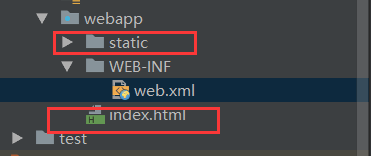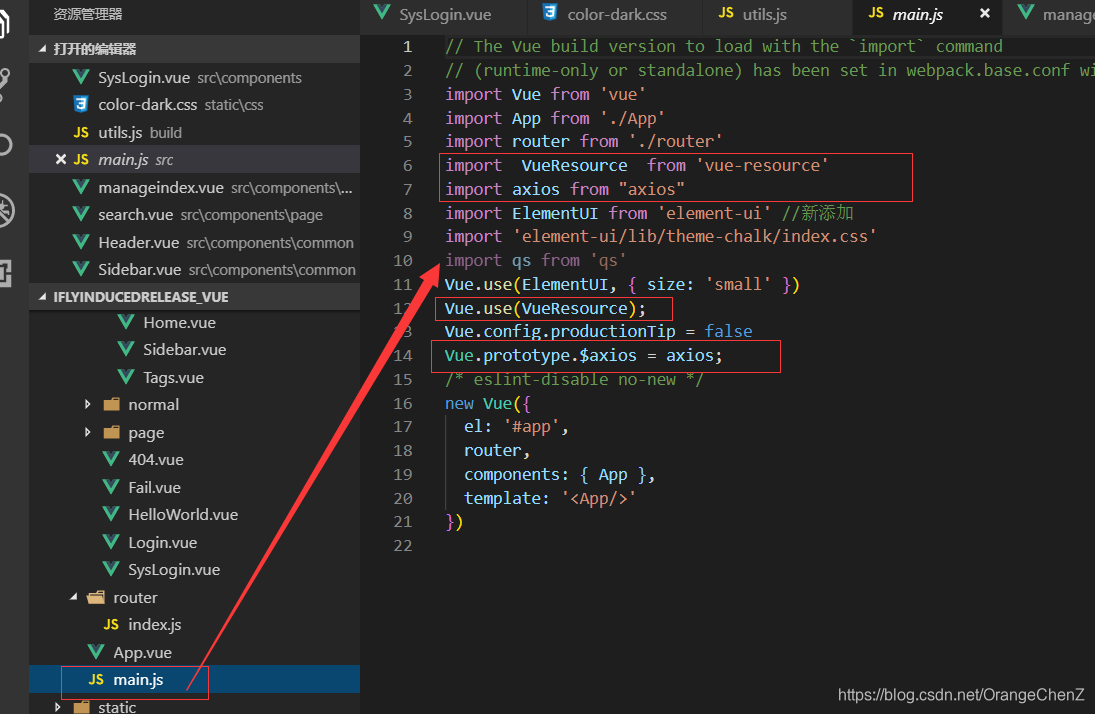要点:
跨域问题
前端请求数据
后端返回数据
问题:
Failed to load resource: net::ERR_CONNECTION_REFUSED
这个问题我是因为后端服务没有启动,报错的;
跨域问题:
Access to XMLHttpRequest at ‘http://localhost:9090/guidance/findGuidancePage’ from origin ‘http://localhost:8000’ has been blocked by CORS policy: No ‘Access-Control-Allow-Origin’ header is present on the requested resource.
解决办法1:
直接将vue打包(vue run build)放到webapp的路径下,就不用担心跨域问题了;
打包注意点:
修改build中的utils.js

修改config中index.js

打包好,将dist文件夹中的文件拷贝到webapp中;

修改web.xml文件的启动首页:
<welcome-file-list>
<welcome-file>index.html</welcome-file>
</welcome-file-list>
解决办法2:
在后端解决跨域问题:
在pom文件中加入:
<dependency>
<groupId>com.thetransactioncompany</groupId>
<artifactId>cors-filter</artifactId>
<version>2.5</version>
</dependency>
在配置文件web.xml中拦截进行处理:
- 配置1
<!--跨域-->
<filter>
<filter-name>corsFilter</filter-name>
<filter-class>com.thetransactioncompany.cors.CORSFilter</filter-class>
</filter>
<filter-mapping>
<filter-name>corsFilter</filter-name>
<url-pattern>/*</url-pattern>
</filter-mapping>
- 配置1解决不了就用终极配置:
<!--加入跨域过滤器配置-->
<filter>
<filter-name>CORS</filter-name>
<filter-class>com.thetransactioncompany.cors.CORSFilter</filter-class>
<init-param>
<param-name>cors.allowOrigin</param-name>
<param-value>*</param-value>
</init-param>
<init-param>
<param-name>cors.supportedMethods</param-name>
<param-value>GET, POST, HEAD, PUT, DELETE</param-value>
</init-param>
<init-param>
<param-name>cors.supportedHeaders</param-name>
<param-value>Accept, Origin, X-Requested-With, Content-Type, Last-Modified</param-value>
</init-param>
<init-param>
<param-name>cors.exposedHeaders</param-name>
<param-value>Set-Cookie</param-value>
</init-param>
<init-param>
<param-name>cors.supportsCredentials</param-name>
<param-value>true</param-value>
</init-param>
</filter>
<filter-mapping>
<filter-name>CORS</filter-name>
<url-pattern>/*</url-pattern>
</filter-mapping>
搞定!
现在来看前端如何请求:
两种方式教会你如何请求;
前期工作:你首先得安装vue-resource,axios
命令:npm install vue-resource,npm install axios --save(save的意思是只做开发用)

- 第一种请求方式:
post
login: function () {
var _this = this;
console.log(_this.username+_this.password);
_this.$http.post('http://localhost:8080/person/login', {
username: _this.username,
password: _this.password
},{emulateJSON:true}
)
.then(function (response) {
var errorcode = response.data.code;
if (errorcode == "200") {
_this.$router.push(
{ path: '/HelloWorld',
query: {
user: response.data.data,
}
});
} else {
_this.$router.push({ path: '/Fail' });
}
})
.catch(function (error) {
console.log(error);
});
},
分析一下:

get
getData() {
// 开发环境使用 easy-mock 数据,正式环境使用 json 文件
if (process.env.NODE_ENV === "development") {
this.url = "/ms/table/list";
}
this.$http
.get(
"http://localhost:9090/guidance/findGuidancePage",
{
page: this.cur_page
},
{ emulateJSON: true }
)
.then(res => {
console.log(res.data.data);
this.tableData = res.data.data;
// conso.log(this.tableData)
});
},
- 第二种请求方式:
axios.get('http://localhost:9090/guidance/findGuidancePage').then(function (response) {
vm.newsContent = response.data;
console.log(vm.newsContent);
})
.catch(function (error) {
console.log(error);
});
后端返回数据:

工具类代码:
https://blog.csdn.net/OrangeChenZ/article/details/86468642